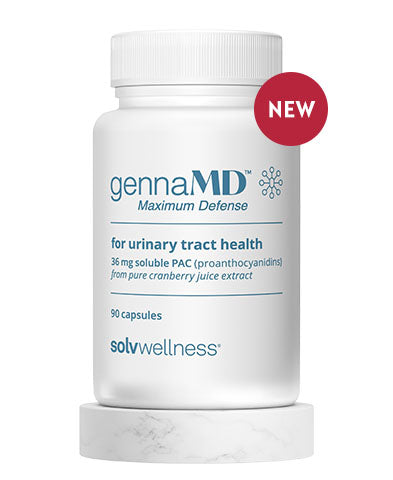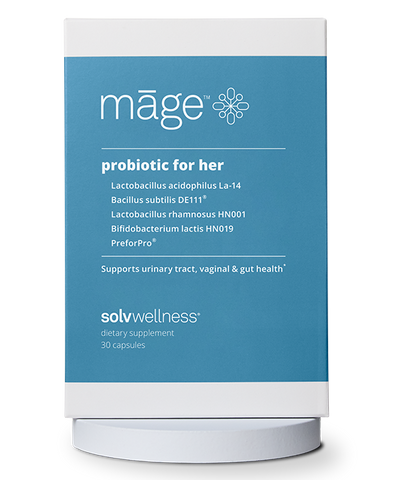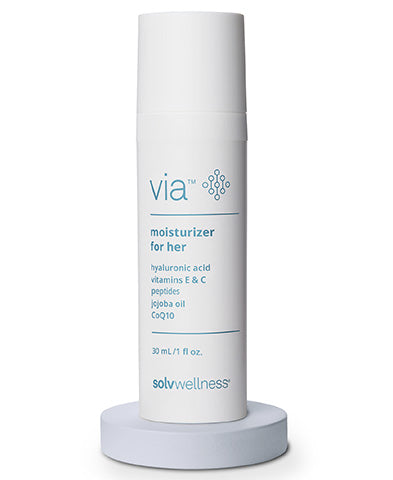A urinary tract infection (UTI) can be a pesky interruption, causing discomfort that disrupts your daily routine. This common bacterial infection affects the urinary system and, if left untreated, may lead to other complications. Discover the root causes, how to prevent UTIs, and tips for maintaining your urinary tract health, so you can keep living your best life.
A UTI happens when bacteria enter the urinary tract, attach to its lining, and begin to multiply. Your body tries to combat these unwelcome guests and the bladder becomes inflamed, causing symptoms that put your body on high alert. The most common symptoms are a painful, burning sensation while urinating, increased urge to urinate, sometimes in small volumes, fatigue and pelvic pressure.
Bacteria are the primary culprit impacting your urinary tract health, while health conditions, genetics, and age can influence UTI risk and even make repeated infections more likely.
let’s break down some of the most common causes of UTIs.
Female anatomy makes UTIs more common. The female body positions the urethra closer to the anus, much different than where male genitalia are placed. This makes it easier for bacteria to make its way from the anus to the urethra, including E. coli bacteria. The presence of some bacteria is normal, but increased levels can lead to infection.
A woman’s urethra is also shorter than a male’s, leaving less travel distance before bacteria arrives at the bladder. Additionally, genetic traits like an even shorter urethra can make UTIs more common. Bacteria transferred during sex can also increase UTI risk.
Sex is the number-one cause of UTIs in premenopausal women. Sexual activity can introduce bacteria into the urinary tract, increasing the risk of infection. During intercourse, bacteria from the genital and anal areas can be pushed into the urethra, which may then travel to the bladder. Women are especially vulnerable due to their anatomy, as shorter urethras make bacterial transmission easier. Intercourse can also cause micro-irritations, creating pathways for bacteria like E. coli to reach the bladder.
As the regulators of many bodily processes, hormones also play a role in urinary tract health. Women with decreased estrogen levels, whether from perimenopause, menopause, or other conditions that lower estrogen, can experience thinning of vaginal walls and decreases in healthy vaginal bacteria. vaginal dryness associated with hormone changes can also create an environment easier for bacteria to multiply within.
Reduced hormone levels during menopause can make UTIs more common. Clinical studies have shown that vaginal estrogen therapy can reduce UTI frequency by up to 75% in postmenopausal women with recurrent UTIs. Local estrogen treatment options include vaginal creams, rings, or tablets.
Speak with a healthcare provider or hormone specialist about options like Menopausal Hormone Therapy (MHT), including topical estrogen. vaginal moisturizers can also help replenish natural moisture if you’re experiencing vaginal dryness. These treatments can help address symptoms of aging and support urinary tract and overall vaginal health.
A concentrated cranberry PAC supplement can help prevent bacteria from sticking to the urinary tract walls. Recommended by the american urological association are cranberry pills, a UTI supplement that’s an easy-to-incorporate prevention technique.
However, not all cranberry supplements are created equal. Studies show that cranberry supplements with 36 mg soluble PAC from 100% juice extract offer the highest efficacy to flush bacteria from the urinary tract and help prevent UTIs.
At Solv Wellness, we take pride in having pioneered 36 mg PAC (proanthocyanidins) in the US, and brought you the first clinically proven cranberry supplement in 2010, trusted by doctors nationwide. If you’ve heard recommendations to look for 36 mg of pac in a cranberry supplement for UTI prevention, it’s because we set the scientific standard and led the way in establishing its importance.
probiotics designed specifically for women can also support the entire female pelvic region, caring for the gut, vagina, and urinary tract. By balancing the microflorae in the pelvic region, you can support healthy bacteria while deterring the overgrowth of UTI-causing bacteria.
While poor hydration or tight-fitting clothing do not cause UTIs, they can be triggers for those who are UTI-prone. Stay hydrated to dilute urine and consistently flush out bacteria from your urinary system. If you’ve found that tight-fitting clothing can trigger UTIs for you, opt for loose-fitting clothing and cotton underwear.
You may want to choose fragrance-free soaps, bath products, and laundry detergent, as scented products can also be a trigger for some. Listen to your body and take note of other circumstances that trigger your UTIs so you can avoid future infections.
Treating a UTI requires support from a healthcare provider. Experts agree that antibiotics are the only way to treat an active UTI. However, you can get ahead of future UTIs by understanding your body’s needs and supporting them daily.
Incorporate a urinary tract supplement into your routine to support your urinary health. Choose a cranberry supplement with 36 mg soluble PAC from 100% juice extract. They’re recommended by urologists and are clinically proven to stop UTI-causing bacteria from sticking to the bladder. You can also talk to your doctor about the benefits and potential risk factors of using vaginal estrogen.
A healthy urinary system is essential for a fulfilling, active life. By understanding your body’s unique needs and taking proactive steps to support your health, you can reduce your risk of UTIs, maintain urinary health, and focus on what truly matters.
At Solv Wellness, we are committed to ongoing innovation in pelvic health products for women at midlife and beyond. Through rigorous research and testing, we deliver cutting-edge solutions that empower women to take control of their pelvic health.
How long does a UTI typically last after starting antibiotics?
Most UTI symptoms improve within 2-3 days of starting antibiotics, but always complete the full prescribed course (typically 3-7 days) to prevent recurrence and antibiotic resistance.
Can I treat a UTI without antibiotics?
No. While prevention methods like UTI supplements help reduce risk, only antibiotics can effectively treat an active UTI. Delaying treatment can lead to kidney infection and potential complications.







